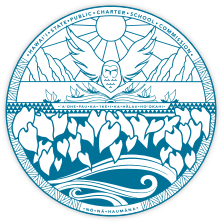Funding for Year Three of the Preschool Development Grant has been released by the U.S. Department of Health and Human Services.
The release of these funds will allow Hawai’i public charter schools to continue to provide high-quality pre-kindergarten services to income-eligible students in their communities and to expand from 120 slots this year to 360 in school year 2017-2018. The federal funds will allow Hawai’i to begin the full implementation of the Preschool Development Grant in 18 classrooms across the state.
“It’s a wonderful opportunity for public charter schools in Hawai’i to expand the educational offerings available to their communities by providing high-quality preschool programs. We are thrilled that this grant will enable us to continue to provide access to families who may otherwise be unable to afford preschool for their keiki,” said Sione Thompson, Executive Director of the Hawai’i State Public Charter School Commission.
The purpose of the Preschool Development Grant is to support states’ efforts to develop or enhance school infrastructure so that they are able to deliver high-quality preschool services. The grant provides opportunities for Hawai’i to grow high-quality and innovative preschool programs in targeted communities to serve as models for expanding preschool to all four-year-olds from low- and moderately low-income families. Pre-K programs on the neighbor islands were strategically selected in rural areas that lack access to high-quality preschool programs.
Hawai’i is one of 18 states awarded the highly competitive joint U.S. Department of Education and Department of Health and Human Services Preschool Development Grant and is only one of five states to open new preschool programs. Hawai’i is the only grantee to receive funds specifically for charter schools. This grant allows charter schools to create preschool programs that are both aligned with research-based standards and reflective of each school’s mission and the needs of its community, such as providing pathways of learning in both Hawaiian and English, the state’s two official languages. Five of the 18 schools provide Hawaiian language learning opportunities and all schools provide varying degrees of Hawaiian cultural education. This allows the grant to support the resurgence and sustainability of the Hawaiian language and culture.
Currently at stake is the fourth year of grant funding. The Commission is hopeful that the President-Elect, Congress, the U.S. Department of Health and Human Services and the U.S. Department of Education will support the last year of the grant by providing the necessary funding to continue offering pre-K opportunities for up to 360 students.

